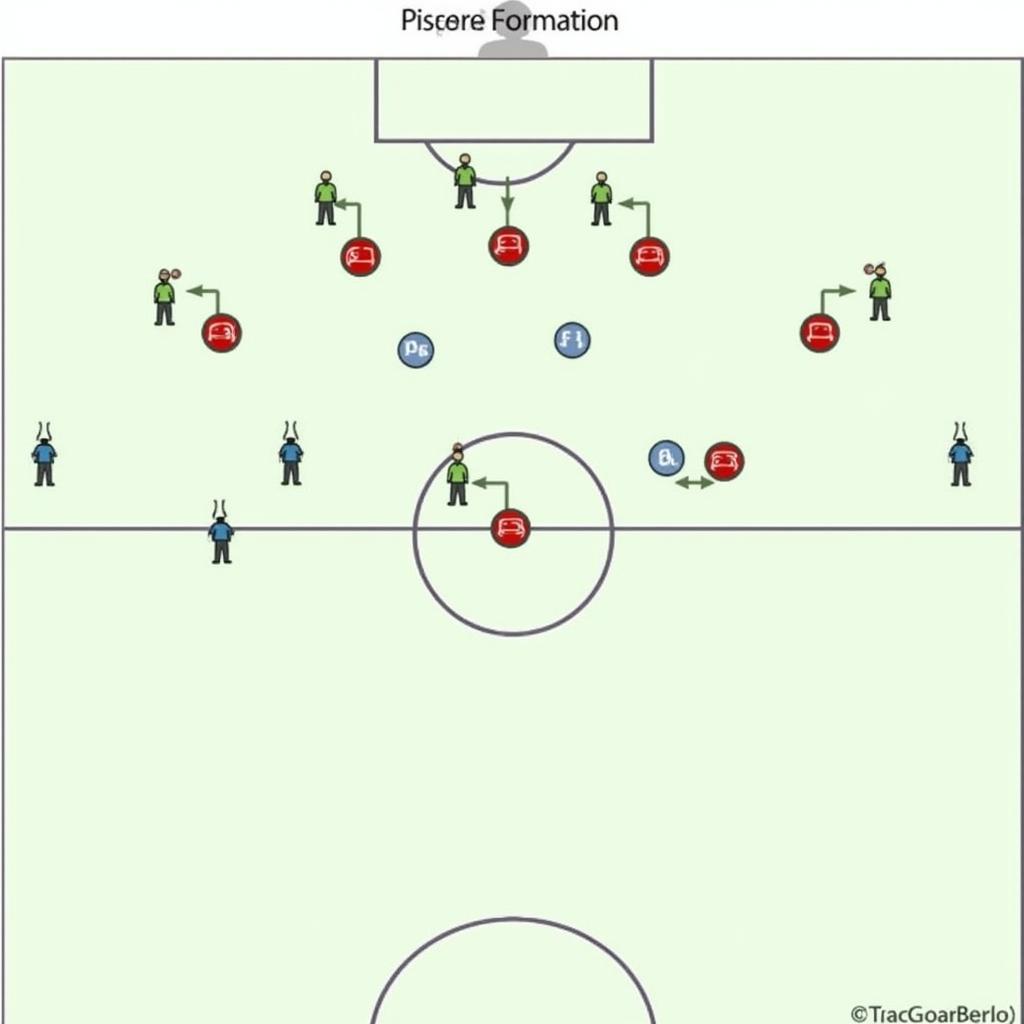Spread Offense Plays are becoming increasingly popular at all levels of football. This tactic is designed to stretch the field horizontally, forcing the defense to cover more ground and creating opportunities for big plays. This comprehensive guide will delve into the intricacies of spread offenses, covering everything from their core principles and variations to their advantages and potential drawbacks.
Understanding the Spread Offense
At its core, the spread offense seeks to create space by positioning receivers widely across the field. This formation forces the defense to spread out, reducing their ability to pack the box and defend the run. This strategic positioning opens up passing lanes for the quarterback and creates opportunities for receivers to make plays in single coverage.
Advantages of Spread Offense Plays
1. Offensive Versatility: The spread offense is incredibly adaptable, offering a wide array of formations and plays. This flexibility keeps defenses guessing and allows offenses to exploit mismatches effectively.
2. Enhanced Passing Game: By spreading the field, receivers enjoy increased separation from defenders, leading to more open passing lanes for quarterbacks.
3. Rushing Opportunities: While primarily known for its passing prowess, the spread offense can also create running lanes. With fewer defenders in the box, running backs can find space on draw plays or quarterback scrambles.
Variations of Spread Offense Plays
1. The Run and Shoot
This variation emphasizes speed and quick passes, aiming to tire out the defense. Receivers run precise routes, often utilizing option routes based on the defensive coverage.
2. The Air Raid
Focusing heavily on the passing game, the Air Raid prioritizes vertical routes and quick throws. It relies on the quarterback making quick decisions and receivers gaining yards after the catch.
3. The Pistol Formation
Offering a balanced attack, the Pistol formation positions the quarterback a few yards behind the center, with the running back directly behind him. This setup allows for both effective running and passing plays.
 Pistol Formation Diagram
Pistol Formation Diagram
Disadvantages of Spread Offense Plays
1. Vulnerability to Sacks: The wide receiver splits can leave the quarterback exposed to sacks, especially against defenses with strong pass rushes.
2. Susceptibility to Turnovers: The emphasis on passing increases the risk of interceptions, especially if the quarterback is inaccurate or under pressure.
3. Difficulty in Short-Yardage Situations: With fewer players near the line of scrimmage, the spread offense can struggle to gain short yardage, particularly on third or fourth down.
Key Elements for Success
1. A Mobile Quarterback: Spread offenses often require quarterbacks who can extend plays with their legs, either by scrambling for yards or buying time to find open receivers.
2. Skilled Receivers: Receivers in a spread offense need to be precise route runners with good hands and the ability to create separation from defenders.
3. Offensive Line Play: The offensive line plays a critical role in providing the quarterback with time to throw and opening up running lanes.
Mastering the Spread Offense: Tips and Strategies
- Film Study: Analyze your opponents’ defensive tendencies to identify weaknesses and exploit them with specific formations and plays.
- Tempo Control: Varying the pace of the offense can keep defenses off-balance. Quick snaps can prevent substitutions and create confusion.
- Pre-Snap Reads: Teach your quarterback to read the defense before the snap. Recognizing coverages and blitzes allows for adjustments at the line of scrimmage.
Conclusion
Spread offense plays, with their emphasis on spacing and offensive versatility, have revolutionized football at all levels. While not without their challenges, the potential rewards in terms of scoring and excitement are significant. By understanding the principles, variations, and key elements of success, coaches and players can effectively implement the spread offense and enjoy its many advantages.
Ready to take your spread offense to the next level? Contact us at 0902476650 or [email protected]. Our team of experienced coaches is ready to assist you in developing a winning game plan.
FAQs About Spread Offense Plays
1. What are the main advantages of using a spread offense?
The spread offense offers numerous advantages, including offensive versatility, enhanced passing game, and the creation of rushing opportunities due to fewer defenders in the box.
2. What are some challenges of running a spread offense?
Challenges include vulnerability to sacks, increased risk of turnovers due to the emphasis on passing, and potential difficulties in short-yardage situations.
3. What type of quarterback is best suited for a spread offense?
Mobile quarterbacks who can extend plays with their legs and make quick decisions are ideal for the spread offense.
4. What are some key coaching points for teaching the spread offense?
Emphasize film study to identify opponent weaknesses, tempo control to keep defenses off-balance, and pre-snap reads for quarterback adjustments at the line of scrimmage.
5. Where can I find more information about specific offensive formations and plays?
Explore our articles on flexbone offense plays, one back offense, pistol offense playbook, i formation plays, and double wing offense for in-depth analysis and strategic insights.
For any further assistance or to delve deeper into specific offensive strategies, don’t hesitate to reach out to us. We’re here to help you navigate the exciting world of football and elevate your game.





